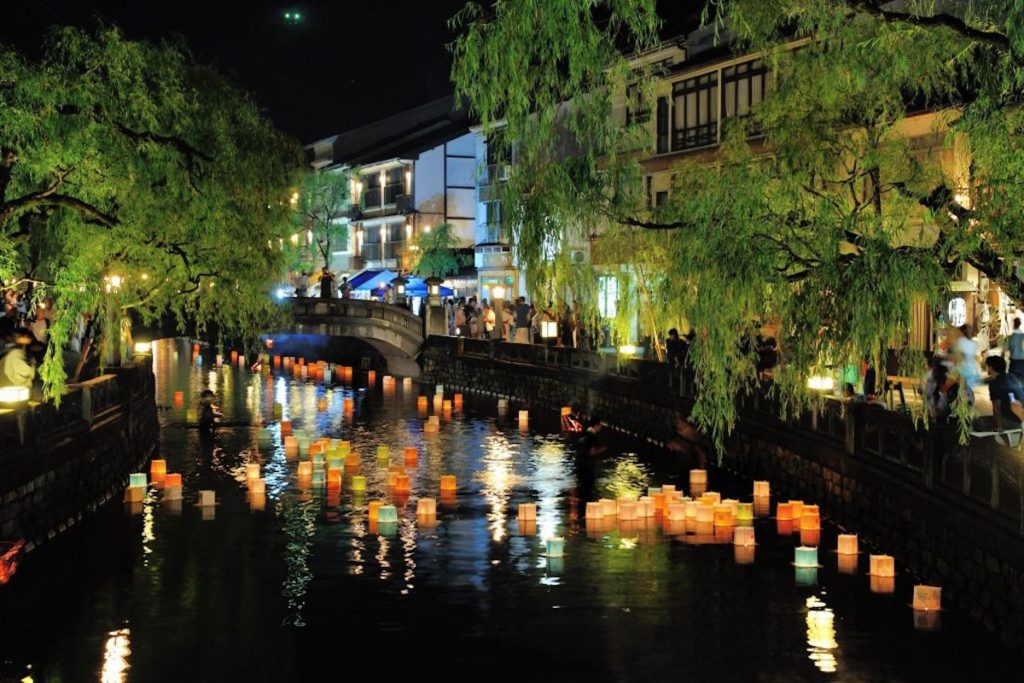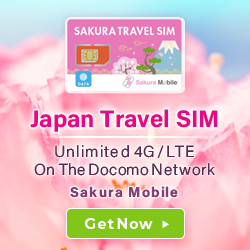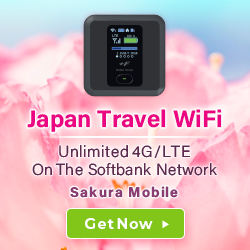Photo courtesy of TOYOOKA PHOTO LIBRARY
In this article, we will be providing a travel guide to Kinosaki Onsen (城崎温泉).
You can expect to read about all the basic information, activities in the area, recommended hotels, and things you need to know before visiting.
Even if you do not know much about onsen, we will be breaking down all the aspects of a good trip, including our recommended travel itinerary.
Let’s get started!
In Japan, you’ll want to be connected without missing out on high speed data and internet!
By reserving online before departing, you can
- Lower your rental fees
- Avoid stock shortages at the airport
To learn more about data and WiFi options for your trip, check out our products below.
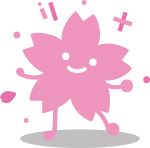
Hello readers! Sakura Mobile is a SIM & WiFi service provider for international residents and tourists in Japan.
Our global editorial team living in Japan will introduce the charms of the country based on what we have actually experienced and felt.
Table of contents
- What is Kinosaki Onsen?
- Enjoying Kinosaki Onsen
- A sample travel itinerary
- The 7 sotoyu
- Top 3 recommended ryokan at Kinosaki Onsen
- Top 5 recommended restaurants at Kinosaki Onsen
- Recommended experiences and activities
- How to get to Kinosaki Onsen
1. What is Kinosaki Onsen?
![]() Click below to play YouTube video↓↓
Click below to play YouTube video↓↓
Kinosaki Onsen is a small town located a two and a half hour train north of Osaka.
With the Otani River which runs through the town, abundance of willow trees, small traditional Japanese inns, and stone arched bridges, Kinosaki Onsen provides the perfect opportunity to enjoy the history and scenic beauty of Japan.
In town, there are 7 different outdoor baths called, “sotoyu.” You can try on a yukata, walk around the area, and enjoy the sotoyu on your trip.
Kinosaki Onsen is recommended for anyone who wants to experience the onsen culture of Japan as well as take a relaxing vacation.
What is a “sotoyu?”
The word “sotoyu” refers to a public bath located outside of a ryokan. Conversely, the word, “uchiyu” refers to public baths located within the ryokan.
At Kinosaki Onsen there are 7 sotoyu. Ryokan in the area offer specific travel bundles that come with a ticket to try them all out for free.
Many ryokan also have the option to reserve a room with an onsen attached, making it easy to enjoy your bath in private, with a significant other, or with family.
↑ Go back to the table of contents
2. Enjoying Kinosaki Onsen
There are three aspects that make Kinosaki Onsen a great vacation spot.
The 7 sotoyu
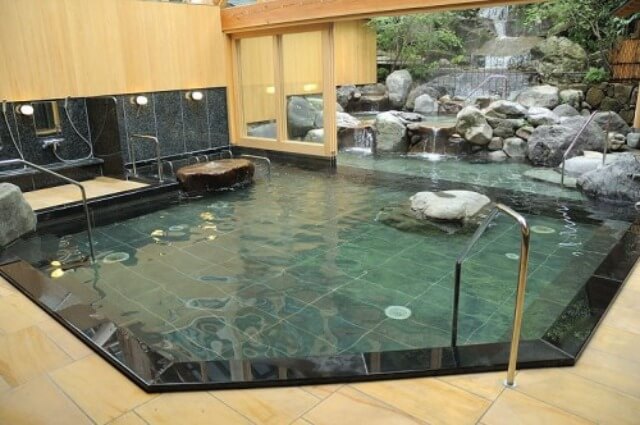
All the sotoyu at Kinosaki Onsen are within walking distance of one another. Each has a different feel to it, so it would be worth your while to try out as many as you can during your stay.
You may be a bit hesitant to take a bath surrounded by people you don’t know, but it definitely will get easier over time.
The surrounding town filled with cafes, street food, and souvenir shops
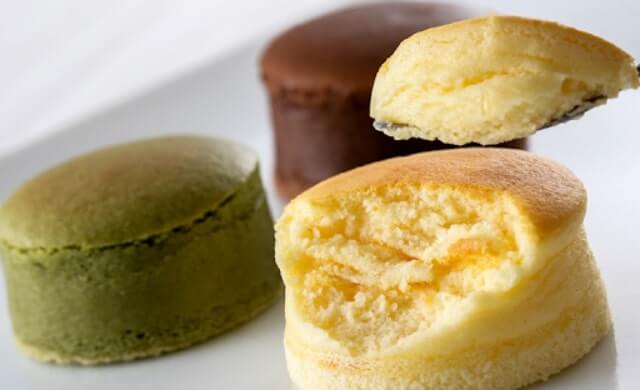
When on an onsen vacation, it is common to borrow a yukata (a light kimono) and geta (traditional sandals) from your ryokan and wear them out and about as you explore the town.
Kinosaki Onsen Town features old-fashioned streetscapes. Just on foot, you can explore an abundance of shops, areas where you can buy street food and walk around, souvenir shops, izakaya (Japanese pubs), and try a myriad of other activities.
Kinosaki Ropeway
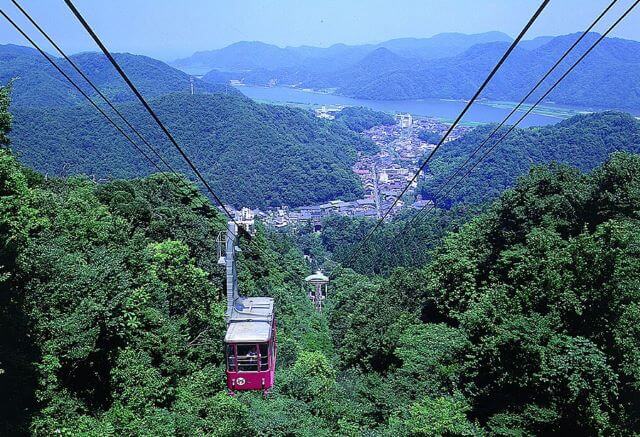
There is a large ropeway at Kinosaki Onsen. Riding it will take you to the top of Daishiyama, a mountain that neighbors the town. From the peak of the mountain, you can experience a great view of the Sea of Japan.
↑ Go back to the table of contents
3. A sample travel itinerary
The following is a travel itinerary that we wrote taking into account all the main attractions of Kinosaki Onsen.
If you are taking an overnight trip (1 night, 2 days)
(Day 1)
12:00~
- Arrive at Kinosaki Onsen
- Leave your luggage at your ryokan and explore the onsen town
- Have lunch
14:00~
- Take Kinosaki Ropeway to the top of Daishiyama
- Stop for a break at Miharashi Terrace Cafe at the top of the mountain
16:00~
- Check in to the ryokan
- Get your ticket from the ryokan to try out the 7 sotoyu for free (If not included in your plan, you can buy one for around 1200 JPY)
- Enjoy the sotoyu until dinnertime
19:00~
- Have dinner and go back to the sotoyu
- Try out old-fashioned Japanese shooting games, or have a drink at the surrounding izakaya (Japanese pub)
(Day 2)
9:00~
- Eat breakfast at the ryokan and check out
- Explore the town, take a break at one of the cafes
12:00~
- Have lunch
14:00~
- Participate in tours and/or activities. The following are some of the most popular:
- Zazen & Matcha + Private Nursery School Tour
- Straw Craft Activity and Craftsman Workshop Tour
- Tajima Tea-Picking Tour
16:00~
- Go back to Osaka or Kyoto
Generally, you will be able to check in to your ryokan between 3 and 4 pm. Checkout times are usually around 9 to 10 am.
Keep in mind that you will first need to check in to your ryokan before getting the free pass to the sotoyu.
There are many different shops and restaurants in the area, so you can have a good time just wandering around town, or you can try your hand at some of the cultural activities available for visitors.
↑ Go back to the table of contents
4. The 7 sotoyu
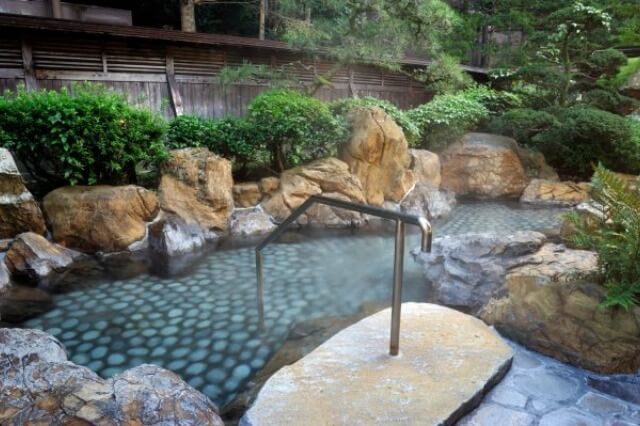
If you stay at a ryokan in Kinosaki Onsen, you will be able to choose a travel plan that includes a free pass to all the sotoyu.
Even if you do not choose a package that includes the free pass, you can still enjoy the sotoyu for around 700 JPY each.
The following is a list of the 7 sotoyu available at Kinosaki Onsen. They all have different days off during the week, so make sure that the sotoyu you want to go to is open before visiting.
- Satono-Yu: 1 pm – 9 pm (Closed on Mondays)
- Ichino-Yu: 7 am – 11 pm (Closed on Wednesdays)
- Jizo-Yu: 7 am – 11 pm (Closed on Fridays)
- Yanagi-Yu: 3 pm – 11 pm (Closed on Thursdays)
- Kono-Yu: 7 am – 11 pm (Closed on Tuesdays)
- Mandara-Yu: 3 pm – 11 pm (Closed on Wednesdays)
- Goshono-Yu: 7 am – 11 pm (Closed on Thursdays)
Here is a rundown of each of the sotoyu.
Satono-Yu (駅舎温泉 さとの湯)
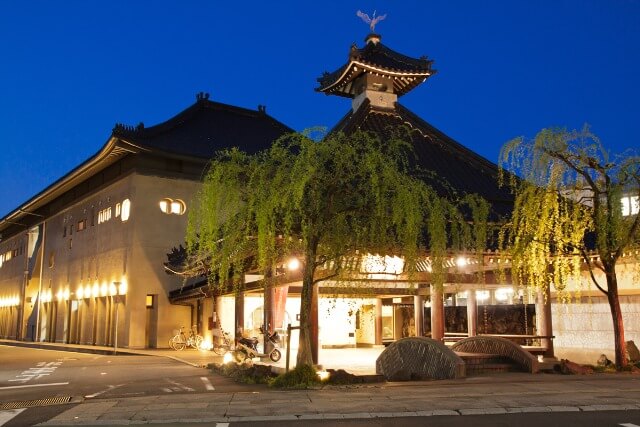
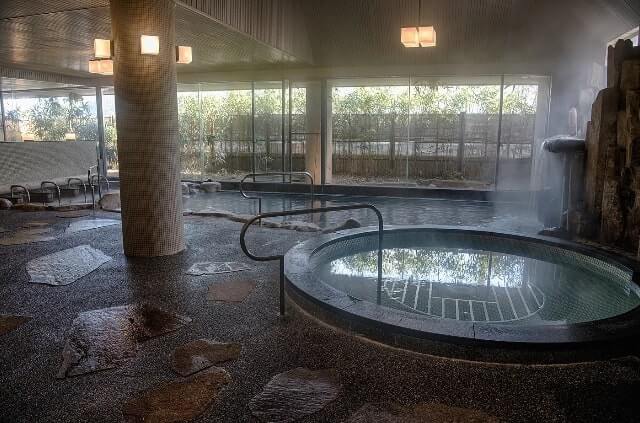
Out of the 7 sotoyu, Satono-Yu is the newest. It is located right next to Kinosaki Onsen Station. The building itself is three floors; the first includes the reception and a resting area, the second is the public bath, and the third floor includes open-air baths.
From the open-air bath on the third floor, you can look out at a view of the Maruyama River, which can look completely different depending on the time of year. You can also find a dry sauna and a traditional sauna, as well as other amenities.
On the first floor, there is a small onsen called an “ashiyu,” a bath made specifically for dipping just your feet. It is recommended you make use of the ashiyu after you’ve been walking for a while and want to take a rest.
Ichino-Yu (一の湯)
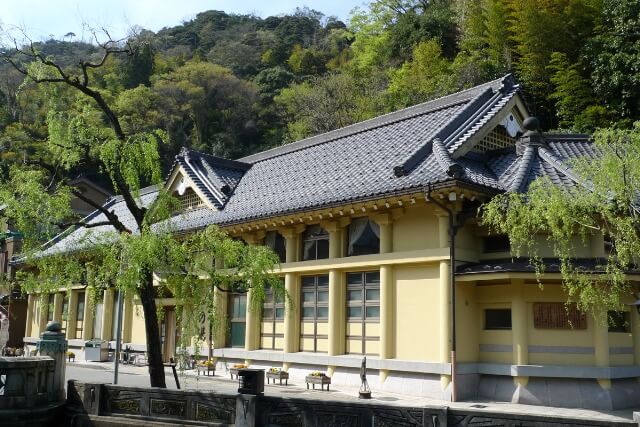
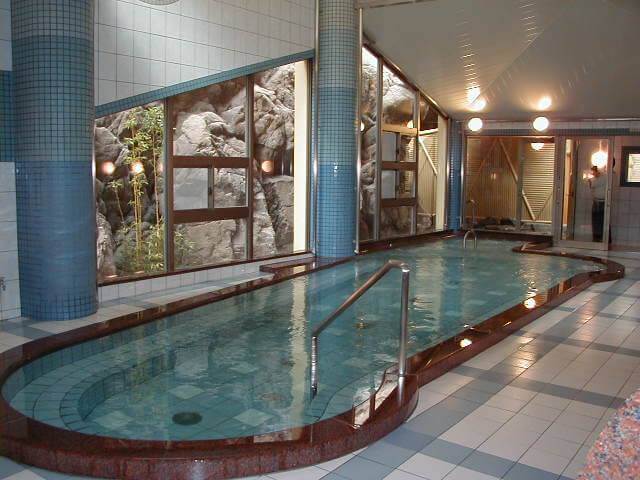
Ichino-Yu is located in the middle of the town and is the representative sotoyu of Kinosaki Onsen. The building is designed in a way that might remind you of a traditional kabuki theater.
Ichino-Yu is famous for its “cave bath”, which is made out of large boulders. Half of it is outside, and the breeze makes it perfect for those who want to spend a long time in the bath.
Jizo-Yu (地蔵湯)
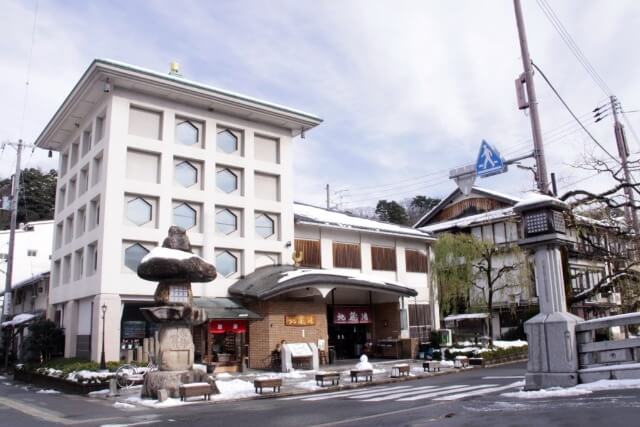
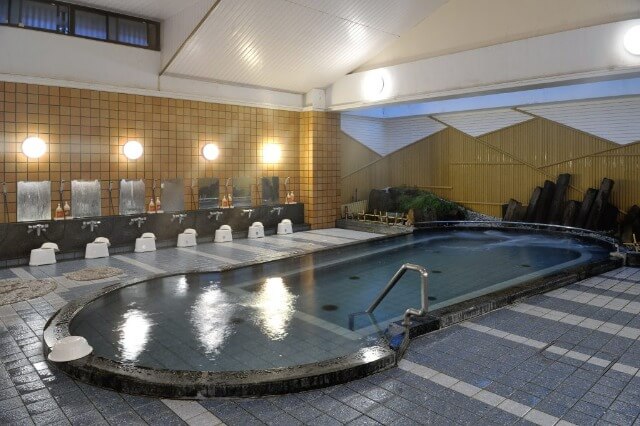
It is said that Jizo, who is the guardian of children according to Buddhist legend, came from the spring of this sotoyu. You will be able to tell that he is well-worshipped when you visit.
Inside the building, you can find a large indoor public bath, as well as the only children’s bath out of all the sotoyu. There is also a family bath and a large resting area on the second floor lined with tatami.
Yanagi-Yu (柳湯)
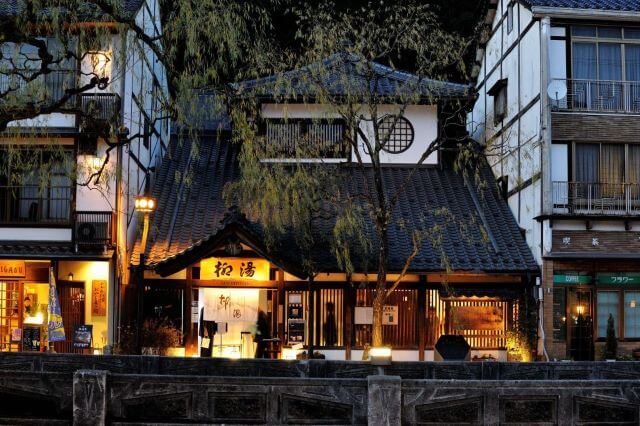
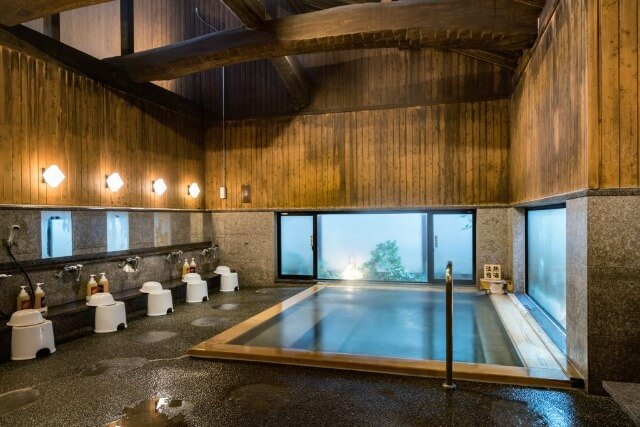
The spring of this sotoyu came out from under a group of willow trees transplanted from China. This is how Yanagi-Yu (Yanagi meaning willow tree in Japanese) got its name.
The baths here are particularly deep and hot compared to the other sotoyu.
It only makes sense that you can find many beautiful willow trees surrounding Yanagi-Yu. Although it is the smallest out of the 7 sotoyu, it still is popular for its traditional atmosphere.
Kono-Yu (鴻の湯)
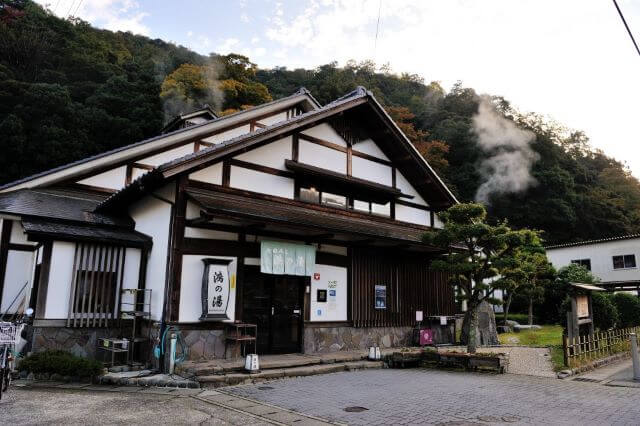
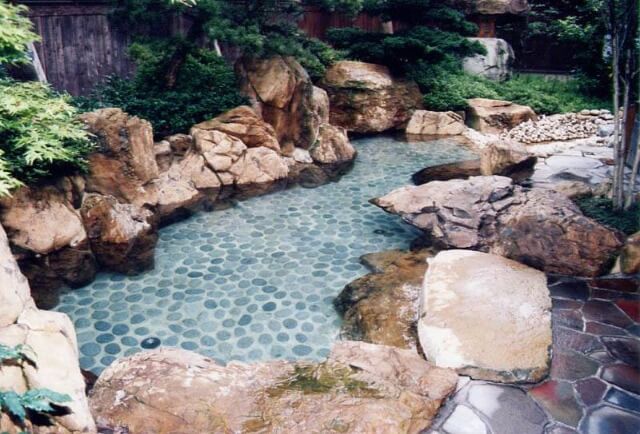
According to legend, a villager found a stork resting in the hot spring to heal its wound, which gave Kono-Yu its name.
Kono-Yu is popular for having a bath surrounded by a Japanese garden. The garden is well taken care of and provides great scenery, especially during the winter months.
Mandara-Yu (まんだら湯)
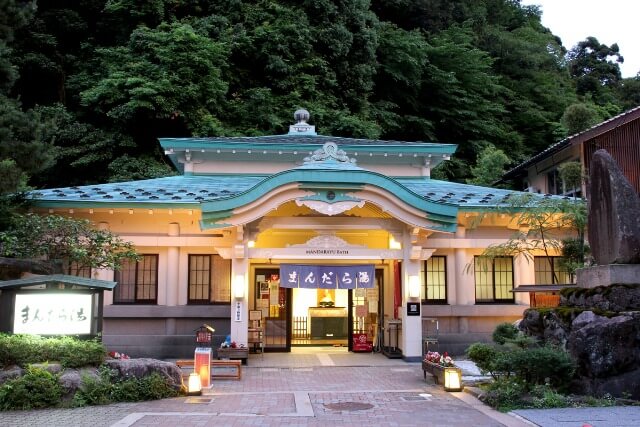
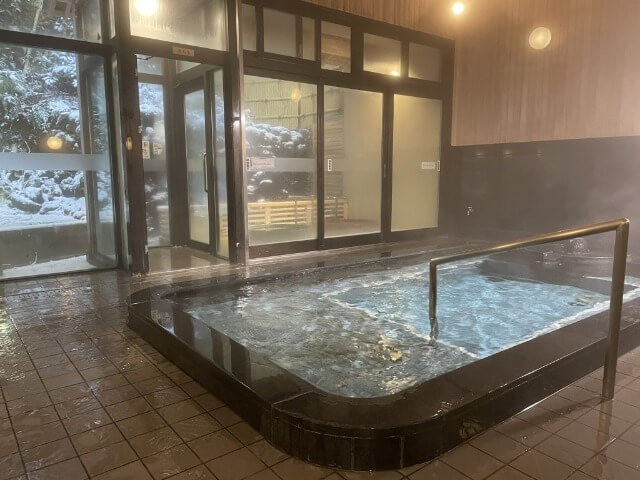
The story goes that about 1,300 years ago, a founder of Onsenji (an ancient temple located in Kinosaki Onsen Town) prayed for 1,000 days, and the result was the birth of Mandara-Yu.
Mandara-Yu is one of the smaller sotoyu, but it features a wooden bath that is situated so that you have a nice view of the mountains. If you are going to Kinosaki Onsen expecting to experience views of nature, you will not want to miss out on visiting.
Goshono-Yu (御所の湯)
![]() Click below to play YouTube video↓↓
Click below to play YouTube video↓↓
Goshono-Yu underwent reforms and reopened in 2020, making it one of the more modern-looking sotoyu. There is a wooden bath, a stone bath, and a bath under a glass roof. You can find a mist sauna in the building as well.
Goshono-Yu also features what is called “neyu,” areas of the bath where you can lay down. These are usually accompanied by jets. At Goshono-Yu, the neyu are located in an area of the bath where you can observe actual waterfalls.
In Japan, you’ll want to be connected without missing out on high speed data and internet!
By reserving online before departing, you can
- Lower your rental fees
- Avoid stock shortages at the airport
To learn more about data and WiFi options for your trip, check out our products below.
↑ Go back to the table of contents
5. Top 3 recommended ryokan at Kinosaki Onsen
We will now introduce some of our recommended ryokan to stay at during your trip to Kinosaki Onsen.
Nishimuraya Honkan (西村屋本館)
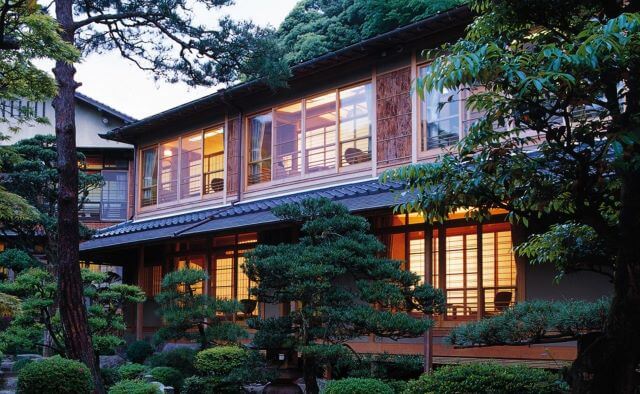
Nishimuraya Honkan has a history of 160 years and is located at the center of Kinosaki Onsen Town. The 34 rooms are surrounded by a Japanese garden, and you can feel the traditional Japanese style of the lodge everywhere you look.
Even inside the ryokan, there are a multitude of hot springs to try out. Some include baths located in bamboo thickets or Chinese-style hot springs.
Using all-natural ingredients, the traditional Japanese seasonal food that can be found at this ryokan is also extremely high quality.
Details
Website: https://nishimuraya.ne.jp/honkan/
Price: From 60,000 JPY per person
# of Rooms: 34
Large Public Bath: Available
Private Rental Baths: Available
Yukata Rental: Available
Tsuki no Shizuku (月のしずく)
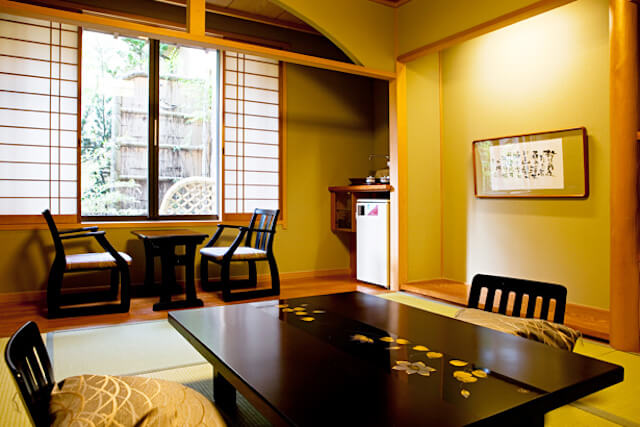
Tsuki no Shizuku is a bit of a different style of ryokan, with only 12 rooms. Everything about the design of the lodge is catered to an aesthetic, the theme of the lodge being the moon. The designer made it a point to put moon motifs all around the interior.
You can also rent a room with a half-open-air bath. After a long day of travel and sightseeing, you can enjoy soaking in the bath in the privacy of your hotel room.
Details
Website: https://www.tsukinoshizuku.com/
Price: From 20,000 JPY per person
# of Rooms: 12
Large Public Bath: Available
Private Rental Baths: Available
Yukata Rental: Available
Kinosaki Onsen Mikiya (三木屋旅館)
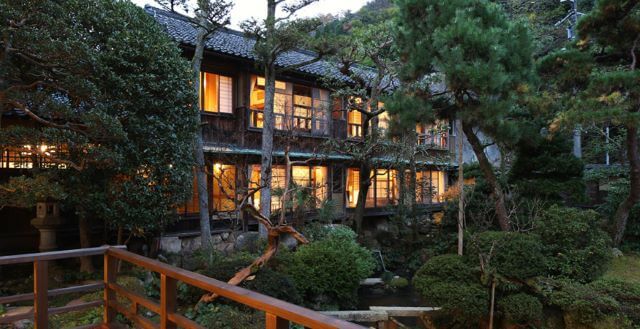
Kinosaki Onsen Mikiya is a ryokan that has been doing business for 300 years.
Japanese novelist Naoki Shiga was a regular here, and this lodge also became the birthplace of his famous novel titled, “At Kinosaki.”
In November 2013, the lobby, dining room, and indoor public bath all were renovated, giving the ryokan a more modern feel.
The hot spring water in the “uchiyu” (public baths inside the ryokan) is known to have many health benefits.
Details
Website: https://kinosaki-mikiya.jp/
Price: From 30,000 JPY per person
# of Rooms: 16
Large Public Bath: Available
Private Rental Baths: Available
Yukata Rental: Available
↑ Go back to the table of contents
6. Top 5 recommended restaurants at Kinosaki Onsen
We have gathered some recommendations for restaurants in Kinosaki Onsen.
The following are the details of each restaurant, including the menu, pricing, and location.
Okesyo Sengyo & Dining Room Kaichuen
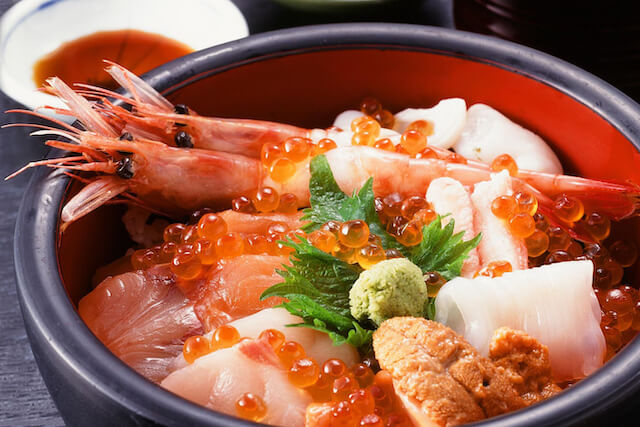
At this restaurant, you can enjoy seafood delivered straight from Tsuiyama Port which is located nearby to Kinosaki Onsen. The building is two stories; the first floor features a fish market and the second is a restaurant.
Naturally, the seafood is very high quality. However, what makes Okesyo Sengyo special is their option to choose something from the first floor and having the chefs prepare it for you to eat then and there.
Details
Website: http://www.okesyo.com/
Cost: Up to 3,000 JPY
Location: 3 minutes walk from Kinoaski Onsen Station
Crab Sushi Daikokuya
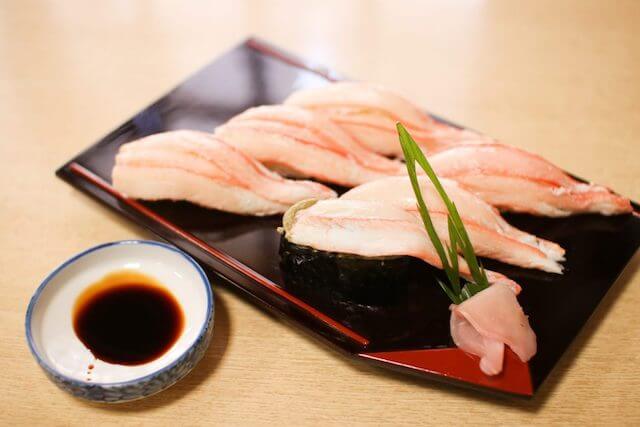
If you like crab, this is the restaurant for you.
Located a quick walk from Kinosaki Onsen station, you can try sushi that is made with crab meat. This restaurant serves other crab delicacies like crab meat over rice and crab soba, just to name a few.
The Red Snow Crab that can only be caught at Kasumi Port in Hyogo Prefecture is used at this restaurant, and its unique taste makes it a must-try for crab lovers.
Details
Website: https://kinosaki-spa.gr.jp/daikokuya/
Cost: Up to 1,000 JPY
Location: 1 minute walk from Kinosaki Onsen Station
Mikuni Tajima Beef & Wine
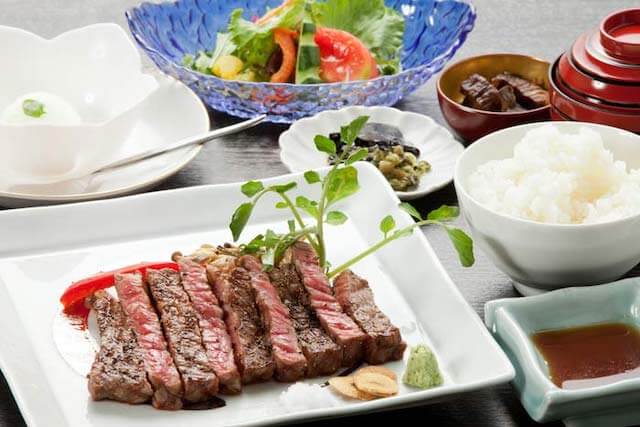
For those who weren’t already aware, Kinosaki Onsen is located in Hyogo Prefecture, whose capital is Kobe. Those reading this article might have a strong image of Kobe beef. Tajima beef is in fact a broader category of beef; the best of the best is chosen to then be labeled as “Kobe beef.”
Regardless of the specifics, those looking to eat high-quality meat while in Hyogo Prefecture should visit Mikuni. You can eat A5 steak or try other dishes like steak katsu, beef stew, beef curry, or steak over rice.
Details
Website: http://mikuni.koyado.net/
Cost: Up to 5,000 JPY
Location: 1 minute walk from Kinosaki Onsen Station
Kinosaki Sweets
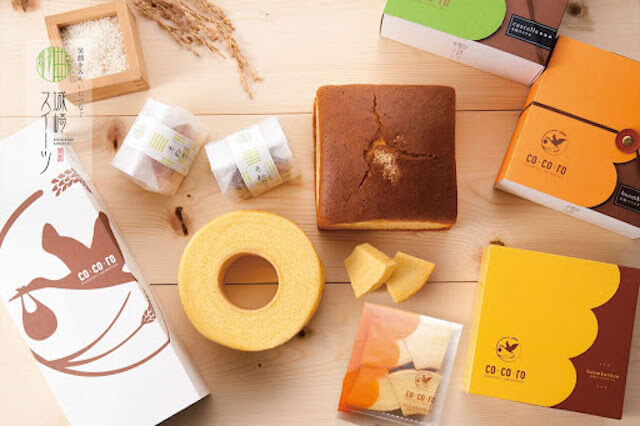
Kinosaki Sweets operates three different cafes that serve all sorts of sweets. Any of these shops would be the perfect rest stop during your exploration through Kinosaki Onsen. If you are looking to take a snack break, it is recommended you take a seat in Kinosaki Sweets Chaya and try some of the ice cream or one of the many drinks available on the menu.
There are also many boxed sweets that would make good souvenirs for family and friends.
Details
Website: http://www.kinosakisweets.com/
Cost: Up to 1,000 JPY
Location: 9 minutes walk from Kinosaki Onsen Station
Sakamotoya Liquor Store
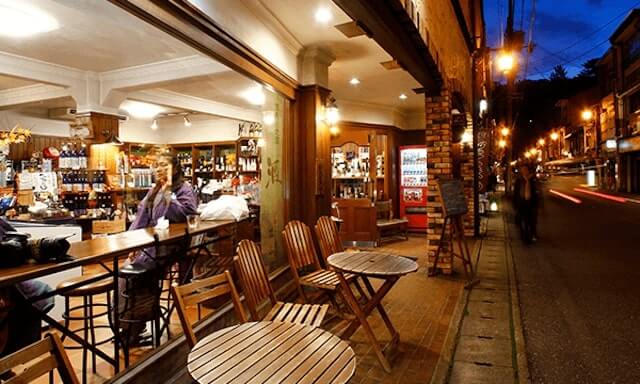
Along with being a liquor store, Sakamotoya is also a sake specialty shop. All sorts of sake are offered anywhere from 300 JPY to 1,000 JPY per shot. You can also try some of the local beer made in Kinosaki.
Many Japanese customers will stop at Sakamotoya for a cold beer after a hot bath. If you are of legal age, it would definitely be worth it to stop by and try the local alcohol before leaving Kinosaki Onsen.
Details
Website: https://sake-sakamotoya.com/
Cost: Up to 1,000 JPY
Location: 8 minutes walk from Kinosaki Onsen Station
↑ Go back to the table of contents
7. Recommended experiences and activities
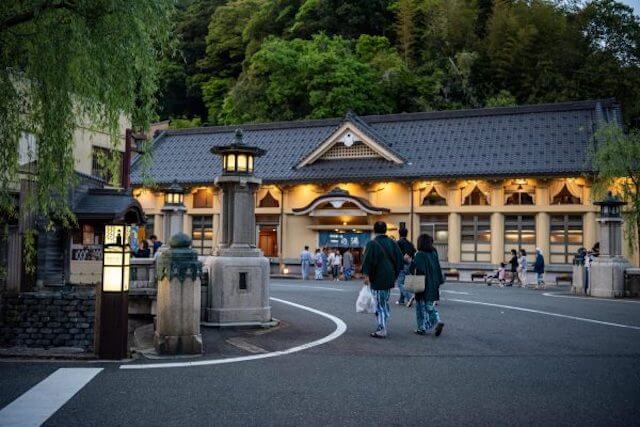
The cultural experiences and activities (all English-friendly) that we recommend you try out while traveling to Kinosaki Onsen are the following.
Cultural Experiences: Tea Ceremony, Flower Arrangement, Koto
With this cultural experience, you can try your hand at the traditional arts of Japan. The time slots are arranged so that you can spend a whole day trying out all of the activities, or just sign up for the ones you are interested in.
The tea ceremony, or “sadou,” is a traditional Japanese ceremony that focuses on the preparation and presentation of tea. There is much more than just pouring and whisking tea, and through this activity, you will be able to learn about the subtle nuances that can be found in the movements and words spoken throughout the ceremony.
Flower arrangement, or “ikebana,” is a traditional Japanese art that was most prominent in the 16th century. Through this cultural experience, you can learn about the history and the natural beauty that can be found in flower arrangement.
The koto is the national instrument of Japan. It is a long wooden instrument that generally has 13 strings, developed in the 16th century. There are not many opportunities to try the koto, so we recommend that you take advantage of it while visiting Kinosaki Onsen.
Onsenji Temple Hot Spring Therapy Origins Tour (with English-speaking guide)
On this tour, you will hike to an ancient temple called Onsenji, where you will have the opportunity to learn about the rituals and customs involved with its history.
The second half of the tour will take you up to the mountains with the Kinosaki Ropeway. At the top of the mountain, you will participate in some traditional activities and games.
Zazen & Matcha + Private Nursery School Tour (with English-speaking guide)
Zazen is sitting meditation that involves sitting in silence for 15 to 30 minutes at a time. The goal is to free yourself from your own thoughts and ideas. After your zazen session, you can drink matcha and eat Japanese sweets.
The second part of this tour will let you pay a visit to a local daycare.
↑ Go back to the table of contents
8. How to get to Kinosaki Onsen
Traveling from Osaka
By train
From the JR Osaka Station you can take an express train directly to Kinosaki Onsen. It will take 2 hours and 40 minutes and cost you around 5,000 JPY.
By bus
There is a bus that runs from Osaka directly to Kinosaki Onsen. It will take you anywhere from 2 hours and 40 minutes to 3 hours and 10 minutes. You can expect to pay about 3,500 JPY for a one-way trip.
Traveling from Kyoto
By train
From Kyoto Station, you can take an express train directly to Kinosaki Onsen. It will take around 2 hours and 30 minutes and cost you about 2,600 JPY.
By bus
Multiple buses run to Kinosaki Onsen from Kyoto. You will be looking at a 3 and a half hour journey that costs about 4,000 JPY one-way.
Traveling from Tokyo
By train
From Tokyo station, you can take the bullet train to Kyoto station. From there, you can take the bus or the train directly to Kinosaki Onsen.
By car
If you rent a car, you can expect to reach Kinosaki Onsen in about an 8-hour drive, depending on traffic conditions and whether or not you use express highways.
By bus
The most cost-effective but not necessarily the most recommended route, you have the option to take the bus from Tokyo to Osaka and then another bus from Osaka to Kinosaki Onsen. The journey will take about 11 hours in total, but will only cost you around 6,500 JPY.
By plane
Plane tickets will fluctuate in price depending on the season and the airline you decide to fly with. With a budget airline, you can usually fly to Osaka for about 5,000 to 6,000 JPY one-way. If you are looking to fly with higher quality airlines, you will be looking at closer to 12,000 JPY. From Osaka, you will then need to take a bus or a train to Kinosaki Onsen.
↑ Go back to the table of contents
Conclusion
Do you feel more informed about Kinosaki Onsen?
Although quite a distance from Tokyo, Kinosaki Onsen offers an onsen experience that is hard to find elsewhere. If you are living in western Japan, it is also a great spot for a short vacation.
Visiting an onsen is a fun and relaxing cultural experience that you will not want to miss while in Japan. We hope that this article comes in handy when planning your trip.
Have you booked your SIM card or pocket WiFi for your trip to Japan yet?
In Japan, you’ll want to be connected without missing out on high speed data and internet!
By reserving online before departing, you can
- Lower your rental fees
- Avoid stock shortages at the airport
To learn more about data and WiFi options for your trip, check out our products below.
CUSTOMER’S VOICE

